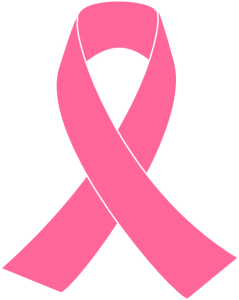
Over the course of a lifetime, about 1 in 8 American women will develop an invasive form of breast cancer. In 2022, about 287,850 women will be diagnosed with new invasive cases of breast cancer, while 2,710 men will receive the same news.
Breast cancer starts when cells in the breast begin to grow out of control. These cells usually form a tumor that can often be seen on an x-ray or felt as a lump. The tumor is malignant (cancer) if the cells can grow into (invade) surrounding tissues or spread (metastasize) to distant areas of the body.
Breast cancer occurs almost entirely in women, but men can get breast cancer, too.
Cells in nearly any part of the body can become cancer and can spread to other areas of the body. To learn more about what is cancer and how all cancers start and spread, see our section on Cancer Basics.
Breast cancers can start from different parts of the breast. Most breast cancers begin in the ducts that carry milk to the nipple (ductal cancers). Some start in the glands that make breast milk (lobular cancers). There are also other types of breast cancer that are less common.
A small number of cancers start in other tissues in the breast. These cancers are called sarcomas and lymphomas and are not really thought of as breast cancers.
Although many types of breast cancer can cause a lump in the breast, not all do. There are other symptoms of breast cancer you should watch for and report to a health care provider.
It’s also important to understand that most breast lumps are not cancer, they are benign. Benign breast tumors are abnormal growths, but they do not spread outside of the breast and they are not life threatening. But some benign breast lumps can increase a woman’s risk of getting breast cancer. Any breast lump or change
needs to be checked by a health care provider to determine whether it is benign.
For all women
Get to and stay at a healthy weight: Both increased body weight and weight gain as an adult are linked with a higher risk of breast cancer after menopause. The American Cancer Society recommends you stay at a healthy weight throughout your life and avoid excess weight gain by balancing your food intake with physical activity.
Be physically active: Many studies have shown that moderate to vigorous physical activity is linked with lower breast cancer risk, so it’s important to get regular physical activity. The American Cancer Society recommends that adults get at least 150 minutes of moderate intensity or 75 minutes of vigorous intensity activity each week (or a combination of these), preferably spread throughout the week.
Moderate activity is anything that makes you breathe as hard as you do during a brisk walk. It causes a slight increase in heart rate and breathing. You should be able to talk, but not sing during the activity.
Vigorous activities are performed at a higher intensity. They cause an increased heart rate, sweating, and a faster breathing rate. Activities that improve strength and flexibility, such as weight lifting, stretching, or yoga, are also beneficial.
Is there a link between diet/vitamins and breast cancer risk?
The possible link between diet and breast cancer risk is not clear, but this is an active area of study. A diet that is rich in vegetables, fruit, poultry, fish, and low-fat dairy products has been linked with a lower risk of breast cancer in some studies. But it is not clear if specific vegetables, fruits, or other foods can lower risk. And most studies have not found that lowering fat intake has much of an effect on breast cancer risk.
But this does not mean that there’s no point in eating a healthy diet. A diet low in fat, low in processed and red meat, and high in fruits and vegetables can clearly have other health benefits, including lowering the risk of some other cancers.
So far, no study has shown that taking vitamins or other supplements reduces the risk of breast cancer (or any other cancer).
Limit or avoid alcohol: Alcohol also increases risk of breast cancer. Even low levels of alcohol intake have been linked with an increase in risk. The American Cancer Society recommends that women who drink have no more than 1 alcoholic drink a day. A drink is 12 ounces of beer, 5 ounces of wine, or 1.5 ounces of 80-proof distilled spirits (hard liquor).
Other factors that might lower risk: Women who choose to breastfeed for at least several months may also get an added benefit of reducing their breast cancer risk.

https://www.cancer.org/cancer/breast-cancer.html
